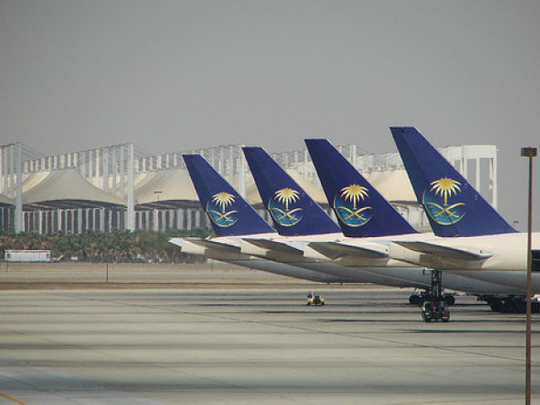
Poll after poll, year after year — each conducted by various independent organisations concerned with airline travel — indicates that the Saudi airport/airline situation continues to leave much to be desired.
In the latest such study, the three main airports in the country, Jeddah, Riyadh and Dammam featured among the top five worst airports in the region, with Jeddah’s King Abdulaziz International Airport also earning the distinction of being the second-worst airport in the world — just a few steps behind Benazir Bhutto International Airport in Islamabad, Pakistan.
Not surprisingly, the airports rated in the top five in the region were Dubai International, Doha Hamad International, Abu Dhabi International, Muscat International and Tel Aviv Ben Gurion International. There is very little room for argument with the rating for the top five best airports regionally, with Dubai foremost among others garnering accolade after accolade in its unremitting drive to expand and improve its services. The airport, as with the emirate itself, has truly transformed itself into global destination in less than two decades.
The 2014 poll was conducted by respondents to a popular Canadian travel blog site called sleepinginairports.net. Among the criteria used to gauge passenger friendliness that featured in the rankings were: * Comfort which captured the availability of plush chairs, armrest free areas, quiet zones, reclining options, etc,
* Cleanliness, which is reflected in clean floors, well-maintained and stocked bathrooms and clean and organised food courts;
* Convenience for the passenger, which includes free Wi-Fi, 24-hour food options, showers, pay lounges and other things to while away the time at the airport while awaiting a flight and finally;
* Customer service, which includes a sea of smiling faces and friendly attitudes, along with considerate and helpful airport workers who take the extra step to help a stranded passenger.
In its summary, the report reflected on the disorganisation, crowded nature and lack of cleanliness of the five worst airports — with particular emphasis on long queues managed by inefficient and “verging-on-hostile staff”. Jeddah airport did not escape censure for its substandard services and surly personnel. “The main terminal is fairly lacklustre. It isn’t overly clean, crowds can be a problem, and the services for travellers are in short supply. Rude immigration officers and lengthy queues do little to improve the traveller experience. Chairs are limited and uncomfortable, etc.”
In another story that broke around the same time in the local press, an employee of the Saudi aviation authorities (GACA) charged under anonymity that ‘Saudi airspace has become one of the most potentially dangerous areas to fly in the world, with the rate of near-crashes surpassing seven times the global average. There are on average 20 near mid-air crashes in Saudi air space each year, compared to one to three worldwide.’
In his professed motive to bring government attention to the problem with the kingdom’s air traffic control, the GACA employee added that ‘an early warning system that detects when aircraft are coming near each other has not been working for four years.’ He also lamented the decrease in the number of air traffic controllers while the number of flights had risen. Furthermore there had been no increase in commercial airspace allocation in the past 20 years in spite of ‘the number of passenger and cargo flights increasing 5-7 per cent each year.’
An official spokesman of GACA rejected the internal disclosures, saying: “There is no truth to this report. The report was not based on authentic data or attributed to reliable sources,” and further went on to attack the 2014 poll on airports as being unprofessional. He refuted the ratings, saying that it was conducted by “a Canadian woman on her blog and was unscientific”.
He added that the assessment was “not based on studies or specified standards”, and that the woman was speaking about the best airport to sleep and rest in. He said this was a personal view alluding that it was not supported by scientific data.
First impressions count
Jeddah’s King Abdulaziz Airport is the gateway to the kingdom’s largest commercial city and the landing point for millions of Muslims from around the globe who travel annually to perform pilgrimage at Makkah and Madinah. For many first-time visitors, this is where first impressions are formed.
For decades, complaints have been levelled at the airport authorities and the national airline for their lack of response to the many complaints filed by an irate public. Such charges usually meet with silence or protestations that a major revamp is just around the corner. We have been hearing this for more than two decades and frankly such promises are falling on deaf ears. As the kingdom’s primary gateway to many from around the world, Jeddah airport deserves a lot more than false promises. Much money has been spent in the past but with little showing in the way of results.
It is about time that aviation officials read the writing on the wall. It is very apparent. And please, no more denials or promises.
Tariq A. Al Maeena is a Saudi socio-political commentator. He lives in Jeddah, Saudi Arabia.









